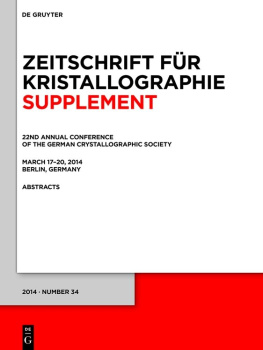This edition is published by PICKLE PARTNERS PUBLISHINGwww.picklepartnerspublishing.com
To join our mailing list for new titles or for issues with our books picklepublishing@gmail.com
Or on Facebook
Text originally published in 1946 under the same title.
Pickle Partners Publishing 2014, all rights reserved. No part of this publication may be reproduced, stored in a retrieval system or transmitted by any means, electrical, mechanical or otherwise without the written permission of the copyright holder.
Publishers Note
Although in most cases we have retained the Authors original spelling and grammar to authentically reproduce the work of the Author and the original intent of such material, some additional notes and clarifications have been added for the modern readers benefit.
We have also made every effort to include all maps and illustrations of the original edition the limitations of formatting do not allow of including larger maps, we will upload as many of these maps as possible.
MS # P-136
THE GERMAN DEFENSE OF BERLIN
by
Wilhelm Willemar, Oberst a.D.
WITH A FOREWORD BY
GENERALOBERST a.D. FRANZ HALDER
Translator:R. D. Young
Editor:R. Ivey
Reviewers:Lt. Col. D.A. Lane
Col. W.S. Nye
Historical Division
HEADQUARTERS
UNITED STATES ARMY, EUROPE 1953
[U.S. Army European Command. "Historical Division]
TABLE OF CONTENTS
Contents
FOREWORD
by Generaloberst a.D. Franz Halder
No cohesive, over-all plan for the defense of Berlin was ever actually prepared. All that existed was the stubborn determination of Hitler to defend the capital of the Reich. Circumstances were such that he gave no thought to defending the city until it was much too late for any kind of advance planning. Thus the city's defense was characterized only by a mass of improvisations. These reveal a state of total confusion in which the pressure of the enemy, the organizational chaos on the German side, and the catastrophic shortage of human and material resources for the defense combined with disastrous effect.
The author describes these conditions in a clear, accurate report which I rate very highly. He goes beyond the more narrow concept of planning and offers the first German account of the defense of Berlin to be based upon thorough research. I attach great importance to this study from the standpoint of military history and concur with the military opinions expressed by the author.
LIST OF CONTRIBUTORS
Colonel Gnther Hartung, Uetzersteig 12 -14, Berlin-Gatow. Colonel Hartung was the leader of a circle of contributors consisting of eight former fellow-combatants living in Berlin. Their contributions have been compiled by him and are included under his name in the supporting studies:
Lieutenant Colonel Ulrich de Maizieres, Argelander Strasse 105, Bonn, formerly in the Operations Branch of the Army General Staff.
Colonel Gerhard Roos, Jenaer Strasse 9, Berlin-Wilmersdorf, formerly Chief of Staff of the Inspectorate of Fortifications.
Colonel Hans-Oscar Whlermann, Geldernstrasse 48, Kln-Nippes, formerly Artillery Commander of the LVI Panzer Corps.
In addition to the above-listed home workers, the following persons were included:
From the Army High Command: Generalmajor Erich Dethlefsen, Generalmajor Illo von Trotha, Colonel Bogislaw von Bonin, Colonel Karl W. Thilo.
From Army Group Vistula: Generaloberst Gotthard Heinrici, Colonel Eismann.
From the Replacement Army: Generalmajor Laegeler.
From Deputy Headquarters, III Corps: Generalleutnant Helmut Friebe, Lieutenant Colonel Mitzkus.
Commander of the Berlin Defense area, Generalleutnant Helmuth Reymann; his Artillery Commander, Lieutenant Colonel Edgar Platho.
From the Wehrmacht Area Headquarters: Major Pritsch, Lieutenant Colonel Karl Stamm.
From the Luftwaffe: Colonel Gerhardt Trost.
From Ordnance: Chief Ordnance Technician (Master Sergeant) Schmidt.
From the Party: Dr. Hans Fritsche.
Also consulted were the Police Commander for Berlin, Colonel Erich Dnsing, and numerous veterans of the fighting, from platoon leaders to regimental commanders, including leaders of such organizations as the Volkssturm and the Plant Protection Service.
CHAPTER 1 INTRODUCTION
The research in connection with the present topic proved to be unusually difficult. It becomes evident almost from the start that no long-range, strategic planning for Berlin's defense had ever been conducted. Instead, all plans had been dictated directly by the current situation.
This planning entailed collaboration from the most varied authorities: (1) Hitler, (2) The Army High Command, (3) The Replacement Army, (4) Army Group Vistula, and (5) The Nazi Party, National Defense Commissioner.
Agencies responsible for carrying out the defense plans were (1) Deputy Headquarters, III Corps, (2) The Commander of the Berlin Defense Area, (3) Troop units from all branches of the Wehrmacht, the SS, and the Police, and (4) the Party Organizations.
Accordingly, the author had to find persons from all of the above organizations who were able to give information. No documents or other written data were discovered, nor was any information found in the later literature of the war which could be considered valid source material.
The only course left to the author was to solicit information from a large number of persons who participated in the operation. Nearly all the answers were made from memory, as only a few of the persons questioned are in the possession of notes which they made at the time. Consequently the data thus obtained had to be compared and, where necessary, supplemented and corrected by enlisting the aid of still other collaborators.
Generalleutnant a.D. Reymann, who from 8 March 1945 to 22 April 1945 was Commander of the Berlin Defense Area, for reasons of principle preferred not to collaborate. The work, therefore, had to be accomplished without his assistance. Later, at the personal request of the author, General Reymann checked the manuscript for factual accuracy. The drafts were also examined by Generaloberst a.D. Heinrici, former commander of Army Group Vistula. It is assumed, therefore, that an acceptable degree of accuracy was attained. In matters of detail the possibility of error still exists. A few contradictions which could not be fully clarified are indicated in footnotes.
To aid evaluation, this text is accompanied by:
a.A chronological outline of the course of events.
b.Sketch 1, showing the distribution of German forces on 14 April 1945 before the beginning of the large-scale Russian offensive on the Oder.
c.Sketch 2, showing the main lines of attack of the Russian offensive.
In preparing this study, the author acquired an over-all view of the actual course of combat operations. Since it seemed desirable not to overlook the knowledge thus gained a short account of the action is included as an appendix.
Chronological Outline of the Course of Events in the Battle for Berlin
31 January 1945Weak motorized Russian forces penetrate across the ice of the Oder into the vicinity of Stausberg.















